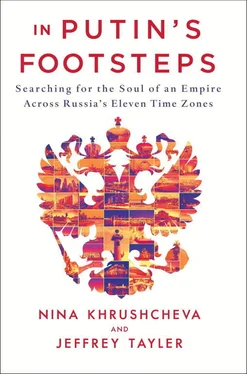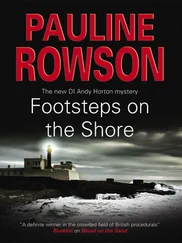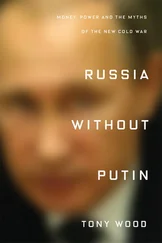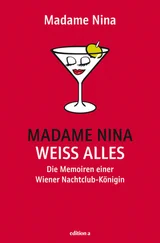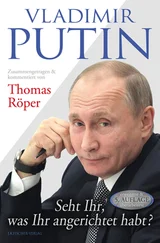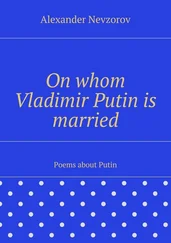During the Prussian centuries, the city was a fortress, too, then facing the Russian frontier. In the Soviet decades, the old German forts—seven in total, grim, all built of grimy red brick—were converted into Great Patriotic War museums and operate as such today. The tanks and submarines strategically placed by these forts serve as a reminder to visitors of the threat from the West.
Rudnikov insisted that actual warfare was not looming; instead, a virtual combat involving a “hybrid” war of perceptions and information was on, because neither side—for obvious reasons—actually wants to fight. Nevertheless, “This threat,” he said, “helps bolster the state’s propaganda. After the Soviet collapse there was talk that Kaliningrad might split from Russia, just as parts of Yugoslavia broke away, and became independent.” He termed the “threat of Germanization” a convenient political tool, nothing more.
During the war the Soviets decimated large parts of the city in retaliation for the Nazi destruction of so much of western Russia. The city had been laid to waste: infrastructure was in ruins, there was no running water or electricity, and a shortage of food and medical supplies persisted. Stalin, however, saw an opportunity amid the destruction. He would have Königsberg completely rebuilt to represent the New Soviet City. This transformation—from a “fascist” city embedded in almost a millennium of German culture into a Socialist dream town devoid of German influence—necessitated a complete erasure of its past.
Nevertheless, the Soviet government followed political considerations in determining what it destroyed and what it left standing. Miraculously surviving both the Nazi and the Soviet assaults, Königsberg Cathedral is still the focal point of the city. It stands on the stone embankment of the lightly wooded Kant Island (once Kneiphof Island) in the Pregel River, amid Kaliningrad’s Soviet-style concrete apartment blocks. Kant is interred beside its north wall, in a triple-plinthed grave supporting an elongated pyramidal slab. The Bolsheviks considered Kant a precursor to Karl Marx, and Kant’s The Critique of Pure Reason was seen as an argument against the existence of God. Hence, the Soviet government decided to leave the cathedral intact.
During the Soviet decades the house of worship fell into disrepair, but under Putin, the maintenance of Kaliningrad’s cultural heritage became a priority. The Gothic cathedral was renovated and restored to much of its glory.
Much, but not all. One drizzly morning, we took a taxi to the cathedral, passing by older women selling flowers, fruits, and vegetables from little stands on the sidewalks, and noting scruffy men of all ages bundled up against the weather, fishing for pike in the canal’s pewter-colored waters. We walked around the massive redbrick structure, where, despite ten years of restoration, many of its windows still sported shoddy slabs of cardboard instead of the original stained glass. Approaching Kant’s tomb, we heard a Russian guide addressing a group of fifteen Russian tourists. After informing her guests that Kant lay buried in front of them, she added, with a schoolmarm’s imperiousness, “And now I invite you to honor the memory of the great philosopher Immanuel Kant with a moment of silence.”
The group fell silent, and so did we—out of shock. After all, who honors a philosopher, a thinker whose legacy consists of words, with silence? Such a practice was eerily familiar from Soviet days, when it was common to observe “moments of silence” for the memory of Lenin, Stalin, or Leonid Brezhnev, who succeeded Khrushchev after his ouster in 1964. We half-expected her to refer to Kant as “our Soviet comrade.”
After some seventy years of communism, during which the state told its citizens not only how to think about politics, but what to make of history, philosophy, and pretty much everything else, Soviet bureaucratic jargon still has a grip on the Russian psyche. When czarist-era peasants became post-1917 proletarian revolutionaries, they adopted this officialese to convince themselves and others of their new status, affirming their transformation from peasant to urbanite. One of Bulgakov’s satirical masterpieces, The Heart of a Dog , recounts just such a phenomenon. The writer had a Russian scientist transmogrify a lovable mutt into a despicable communist functionary spouting militantly officious lingo to humorous effect. After the Soviet Union’s collapse such language still permeates the interactions between citizens and state employees—and even those in the private sector.
We found evidence of this at the cathedral’s elaborate lavatory, where a sign outside indicated its rezhim raboty , or “work regime.” “Regime” is a holdover from the Soviet past, when all sorts of institutions, from airports to factories to local bakeries to corner cobblers, were governmental entities serving the nation in accordance with criteria laid out in five-year plans. The economy was planned, and everything was ready for potential militarization. (Twenty-five years since the end of communism, a good number of cafés and restaurants—and not only in Kaliningrad—still present themselves to the public as if they were national security installations.) Inside the lavatory, the middle-age female attendant, when we complimented her on the lush, even exotic, potted flowers gracing the atrium between the men’s and women’s rooms, replied gruffly that they exist “po rasporyazheniyu administratsii. ” She meant that the flowers were arranged according to the instructions of the church’s administration. State planning has not only failed to fade away, it has extended to public toilets.
The cathedral opens every day starting at ten in the morning. Much more than a church, it now hosts, on its upper stories, a museum devoted to Kant. On the ground floor it houses a spectacular music hall staging concerts in the evenings and featuring a Baroque organ dating back to the 1800s; two chapels are in operation just inside the entrance portals. Yet here, even religious faith bears traces of history and politics: one chapel is Lutheran, a tribute to the Protestantism of its builders; the other, Russian Orthodox.
We were among the first to walk in that morning. By the ticket office we immediately found ourselves witness to a conversation reflecting Russia’s internal tensions—between its history and its ideology, its geography, and its identity.
An elderly cleaning woman saluted the uniformed guard on duty and wished him a pleasant Border Guard Day. In fact she was a month early; Border Guard Day falls on May 28. No matter: in Russia, holidays honoring members of various professions—journalists, teachers, postmen, the armed forces, and so on—sprinkle the calendar.
The man replied, “I’m guarding the cathedral, not the border.”
“No,” the woman said, “we’re surrounded by borders. We must be vigilant! We’re all border guards here!”
A passing Lutheran priest, stern and silver-haired, jumped into the conversation. “Why do they even bother to worship God when the only person they truly worship is Stalin?”
The cleaner answered, “Well, we have to pray to someone, and Stalin is the worthiest. He instilled the fear of God in everyone.” The incongruity of describing an atheist tyrant—in the 1930s alone almost 200,000 priests were arrested, [14] 6 I. A. Kurlyandsky, Stalin, Vlast, Religiya [Stalin, Power, Religion] (Moscow: Kuchkovo Pole, 2011), 42–43.
and half were shot to death—as capable of arousing piety eluded her, as it eludes many increasingly patriotic Russians. She then turned to an icon of Christ above the entrance to the Orthodox chapel and crossed herself.
Once inside the Lutheran chapel, we looked to the priest—also a tour guide, as it happened—for an explanation. Why would Stalin be so openly worshipped in such a “Western” city? Moreover, in a cathedral the Bolsheviks might have leveled, had they governed the oblast in their first decades in power? Even in Moscow, adoration for the tyrant—many Russians do hold him in high regard and his rating as the “most outstanding” Russian tops everyone’s list, including Putin’s—finds expression in subtler ways. [15] 7 Damien Sharkov, “Stalin More Popular Than Putin, Russians Say,” Newsweek , June 26, 2017.
Читать дальше
